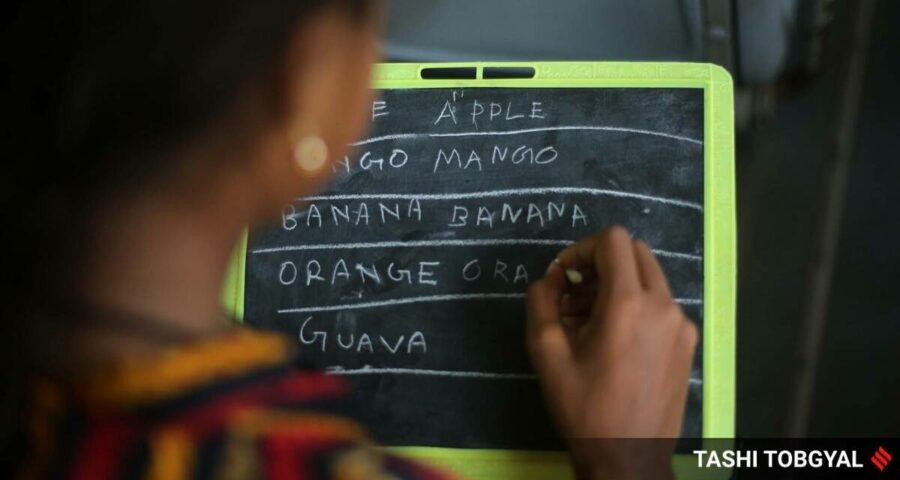The report underlines that the rise in enrollment in government schools is nearly uniform across age groups and grades.
Enrollment of children in government schools has leaped from 65.8 per cent to 70.3 per cent over the last one year, according to the latest Annual Status of Education Report (ASER) survey. The survey aims to capture the transition in the education system in the country as the Covid-19 pandemic shows signs of receding.
The trend of more students depending on tuition classes, which came up in the 2020 ASER survey as well, holds, with the share rising from 32.5 per cent to 39.2 per cent. This is seen as a natural outcome of families seeking external support due to the prolonged closure of schools, states the report.
Digital divide remains an area of concern with as much as 26.1 per cent children with smartphones at home having no access to the device. Younger children are more deprived when it comes to access to smartphones, with as many as 40 per cent having no access despite having devices at home, states the report. The report was prepared based on a phone survey covering 75,234 children aged 5-16 across 581 rural districts in 25 states.
Releasing the report, Wilima Wadhwa, Director, ASER Centre, said the survey, which took place in September-October, primarily focused on enrollment, access to learning material, digital devices, and support to children at home. “While the situation is still far from normal, we are seeing some big changes,” she said.
As many as 76,606 households in 17,814 villages were covered under the survey. The centre also reached out to 4,872 schools that have reopened and 2,427 schools that were still shut when the calls were made to the school authorities, including principals and teachers.
Wadhwa said while the proportion of enrollment of children in government schools remained steady till about 2020, it showed a dramatic rise of five percentage points since last September.
According to the fine print, the share of children in government schools has risen from 64.3 per cent in 2018 to 65.8 per cent in 2020 to 70.3 per cent in 2021. On the other hand, the enrollment in private schools has dipped, for the first time in recent years, from 28.8 per cent in 2020 to 24.4 per cent in 2021.
“There could be many reasons behind the rise in enrollment in government schools. Families have suffered economic distress during the pandemic. Also, during the pandemic many affordable private schools shut across the country. Many migrant families moved back to villages,” Wadhwa said. Incidentally, the share of children not enrolled in schools has remained the same as last year at 4.6 per cent.
The report underlines that the rise in enrollment in government schools is nearly uniform across age groups and grades. For example, in the 7-10 age group among boys and girls, the share has risen from 60 per cent to 68 per cent and 68 per cent to 72 per cent respectively.
However, there are wide variations among states, with the rise driven mainly by large northern states and all southern states, except Telangana. In Uttar Pradesh, government school enrollment has risen by a staggering 13 percentage points, while the same is 12 percentage points in Kerala. All southern states, except Telangana, were found to have shown a rise in enrollment of about 8 percentage points.
The other major highlight of the report is that 39.2 per cent of surveyed students were found depending on tuition classes, up from 32.5 per cent in 2020 and 28.6 per cent in 2018. The jump was seen across states, including in Bihar and West Bengal, where students were found dependent on tuitions more than their counterparts in other states even before the pandemic. In Kerala, however, there was a dip from 28.8 per cent in 2020 to 18.8 per cent for reasons yet unclear, said Wadhwa.
In terms of access to digital devices, an important parameter to assess the state of education in the age of online classes, the survey found that the smartphone penetration has doubled in rural India, from 36.5 per cent in 2018, to 61.8 per cent in 2020 to 67.6 per cent in 2021. However, 26.1 per cent surveyed students said they do not have access to the smartphones despite having one at home.
State-wise dreak-up also shows a wide disparity with Bihar and West Bengal showing below 60 per cent smartphone penetration, while Kerala and Himachal Pradesh have near universal availability of these devices in households.
Source: Read Full Article


